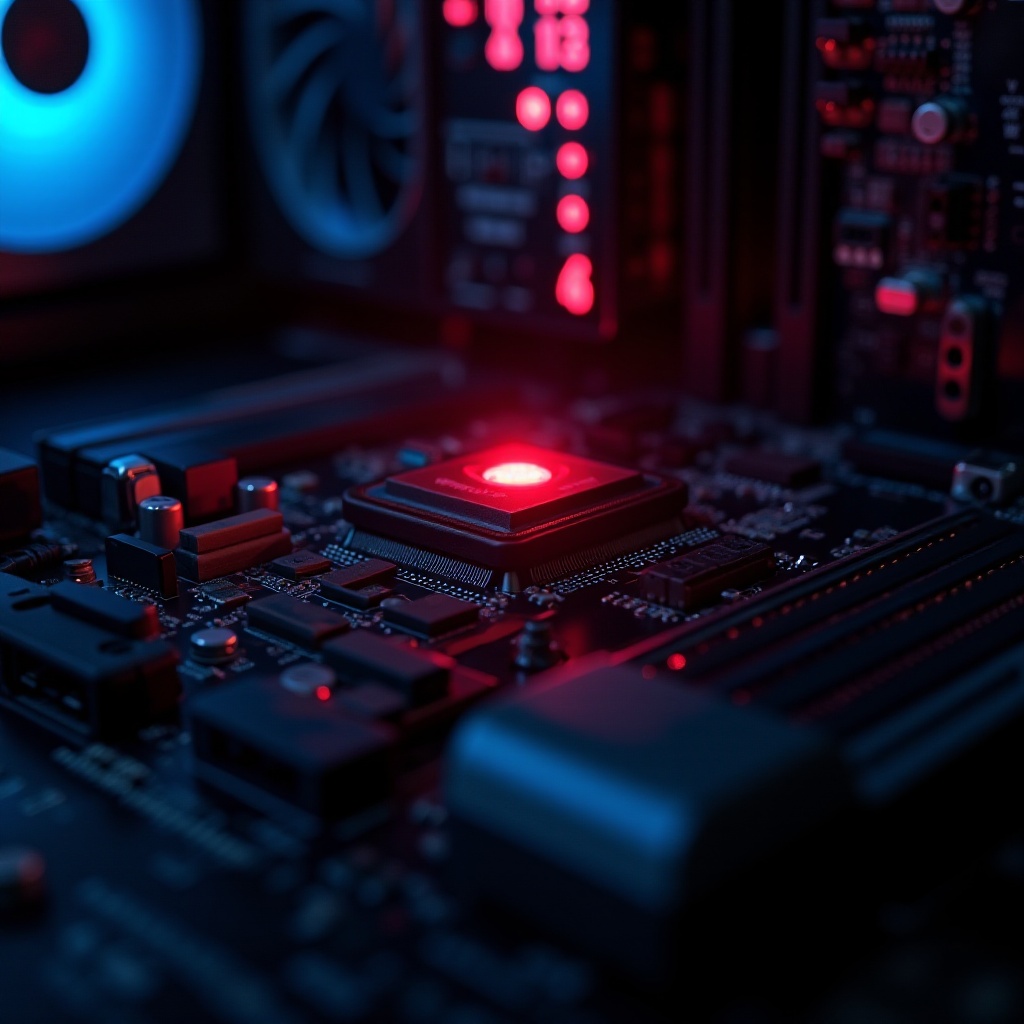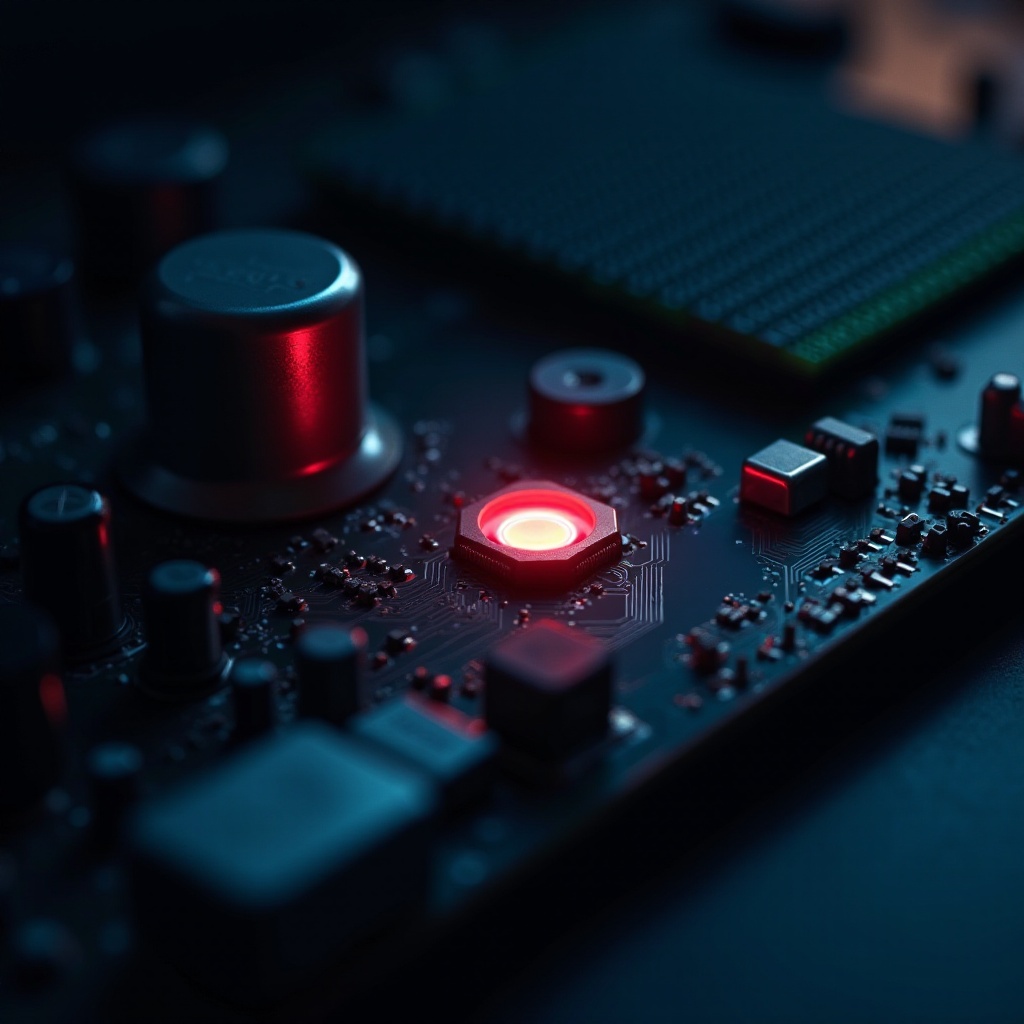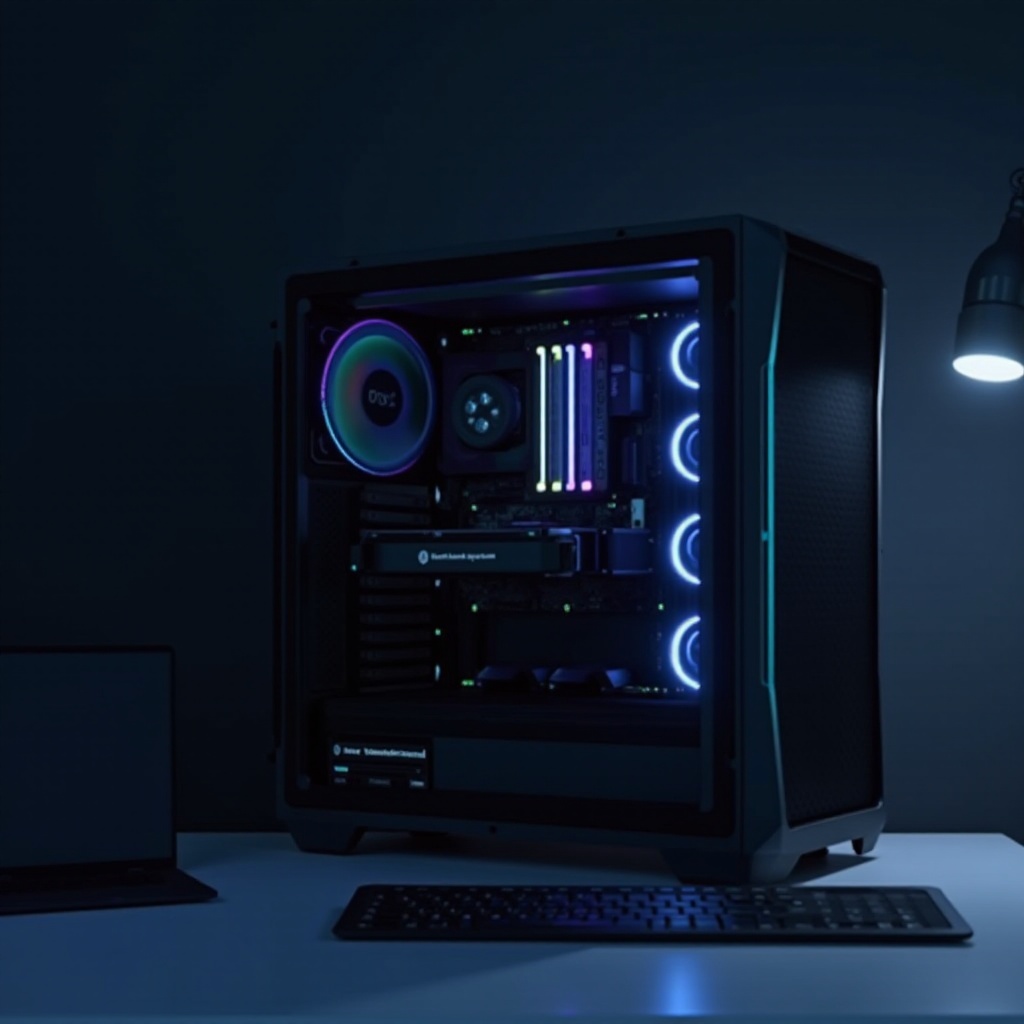Introduction
Encountering the boot light on your motherboard without any display can turn a productive session into a stressful ordeal. While this issue is prevalent, it often leaves many hardware enthusiasts and novices alike pondering over their setup rather than enjoying it. Not only does it inhibit screen visibility, but it can also halt productivity or gaming sessions. As various components work together to create the initial display, a systematic approach is key to diagnosing the issue. By understanding your system’s signals, you can restore functionality efficiently.

Understanding the Boot Light and Its Indicators
Motherboards are smartly equipped with diagnostic LEDs, marked as boot, VGA, DRAM, or CPU, serving as guides to potential hardware malfunctions. The boot light, in particular, is a telltale sign of startup issues, potentially highlighting BIOS misconfigurations or deeper hardware-related problems.
These LEDs act as the motherboard’s voice, indicating the specific area needing attention. When your boot light shines without a display, it suggests a snag in the critical startup process, despite primary systems powering up. By recognizing which specific LED is illuminated, you can narrow down your troubleshooting approach significantly. For instance, a CPU failure will trigger the CPU light, while a DRAM issue turns on the DRAM light.
Recognizing these indicators allows for a more streamlined approach to solving ‘no display’ issues, pinpointing the malfunctions to specific hardware segments.

Common Causes of the No Display Issue
Several culprits might cause the boot light on your motherboard to activate without sending a visual signal to your monitor.
First, incorrect BIOS settings might disrupt the boot sequence, keeping the system in limbo. Poor or loose cable connections between the GPU and monitor could also result in a blank display. It’s equally important to consider a power supply unit that might be underperforming, failing to provide adequate power for the display.
Hardware issues often play a major role; problematic RAM or outdated GPU drivers are notorious for causing issues. Additionally, incompatible new components may not sync with older motherboard firmware, triggering the boot light to signal an issue. Physical damage or improper installation of components like the CPU can also complicate display functionalities.
Understanding these elements is pivotal for an effective resolution, necessitating a comprehensive and methodical approach to troubleshooting.
Initial Troubleshooting Steps
Before engaging in complicated diagnostics, several initial actions could rectify many typical problems.
-
Restart the Computer: A reboot can often clear temporary issues that activate the boot light.
-
Verify Cable Connections: Double-check that all connections, including HDMI, DisplayPort, and power, are firm between your monitor and PC.
-
Swap Display Ports: Test different ports or cables to rule out faulty connectors or ports issues.
Though these steps might seem rudimentary, they can sometimes unexpectedly resolve problems caused by minor glitches or loose connections.

Hardware Diagnostics and Checks
If basic solutions fail, conducting meticulous hardware checks is crucial.
Verifying RAM and CPU Functionality
Begin by reseating or swapping RAM sticks to ensure module slots are operational. Test each stick for defects individually. Also, ensure the CPU’s installation is correct and that no pins are bent.
Inspecting GPU and Monitor Connections
Securely reseat the GPU, confirming its solid connection with the motherboard. Test on different graphics outputs or with another monitor to rule out the monitor itself as the issue.
Checking Power Supply and Cabling
Confirm the power supply’s efficacy by ensuring all cables are attached and intact. Disruptive power flow from a deficient PSU can hinder display initiation.
These checks cover vital hardware aspects and often uncover reasons behind persistent boot light and no-display conditions.
Software Configuration and BIOS Settings
Sometimes, the root of the issue lies in software configurations. Resetting your BIOS to default settings is a recommended step:
- Access the BIOS during boot (keys vary by manufacturer, often F2, F12, or Delete).
- Find the option to reset BIOS settings to default.
- Save the changes and reboot the PC.
Additionally, updating the BIOS can improve compatibility with recent hardware, potentially resolving boot light incidences.
Advanced Troubleshooting Techniques
If primary and secondary measures falter, more advanced techniques may be necessary.
Minimal Hardware Setup Testing
Strip the system to its basics, removing non-essential hardware to isolate potentially faulty components.
Using Diagnostic Tools and POST Cards
Using POST (Power-On Self-Test) cards can aid in diagnosing by providing specific error codes. These diagnostic tools are instrumental in identifying underlying hardware malfunctions.
Seeking Professional Assistance
When personal attempts don’t pan out, seeking professional help ensures further damage is avoided, and the problem gets expertly addressed.
Conclusion
A boot light with no display can seem intimidating but isn’t insurmountable. A systematic troubleshooting process—from preliminary checks to complex diagnostics—often unveils the issue efficiently. Whether addressing a loose cable or correcting BIOS settings, each step brings you closer to regaining a functional display.
Frequently Asked Questions
Why does my motherboard boot light come on but there’s no display?
The boot light often indicates an issue during POST, linked to hardware malfunctions, incorrect BIOS configurations, or faulty connections preventing display initialization.
How can I reset my BIOS settings to fix a no display issue?
Enter the BIOS during startup, choose the ‘reset to default’ option, save changes, and restart the machine to reset BIOS settings.
What should I do if my diagnostic efforts don’t resolve the problem?
Consider consulting IT professionals or technicians if personal efforts are inadequate, to avoid hardware damage and ensure the issue is properly addressed.
